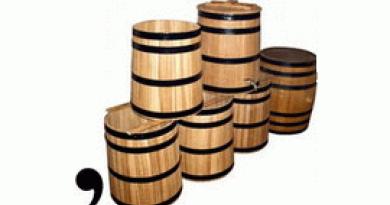Every autumn, bears of temperate and polar latitudes (in particular brown and black) begin to prepare for hibernation. All spring, summer and autumn, these animals actively fed, fattening up their fat reserves for the winter. And now, when the cold weather sets in, they are looking for suitable shelter to spend the winter. After shelter is found, the bear goes into hibernation.
Hibernation of bears in some cases lasts up to six months. During hibernation, some species, such as the black bear (Ursus americanus), reduce their heart rate from 55 beats per minute to about 9. Their metabolic rate decreases by 53%. Naturally, all this time the bears do not eat, drink or produce waste. How do they do this?
To understand what happens in a bear’s body during hibernation, it is necessary to immediately clarify what hibernation itself is. And why is this not “anabiosis” in the literal sense of the word. In the literal sense of the term, “anabiosis” is the process of complete inactivity of an animal. At this time, the metabolic rate decreases to levels that are incompatible with life for most higher animals.
Some species of amphibians (some newts and frogs) freeze in frosts, thawing without harm when the warm season begins. This “freezing” is literally painless for them due to the production of a specific substance that has the properties of antifreeze, which prevents the water in their body from freezing.
Bears don't freeze. Their body temperature remains high enough during hibernation, which allows them to wake up in case of any danger, leaving the den. By the way, bears that woke up ahead of time are called “connecting rods.” They pose a significant danger to humans, since in winter the bear cannot find enough food and is always hungry and aggressive.
Some researchers claim that bears do not go into suspended animation, as mentioned above. But there are also scientists who call bears “super-anabiotics”, since not eating, drinking or defecating for six months, while remaining able to quickly emerge from hibernation - this is a unique phenomenon in the animal world.
“In my opinion, bears are the best suspended animals in the world,” says Brian Barnes of the Institute of Arctic Biology at the University of Alaska, Fairbanks. This scientist spent three years studying the hibernation patterns of black bears.
“Their body is a closed system. They can spend the entire winter using only oxygen to breathe, which is all they need,” says Barnes.
Why don't bears defecate during hibernation? In short, it is because a fecal impaction forms in their body at this time. This is a special mass that researchers have long found in the esophagus of hibernating bears.
It was previously thought that bears, before entering a den, would eat large amounts of plant material, the fur of other bears, and other materials that were indigestible and which would then form a plug in the animal's intestines. The scientists who came to this conclusion relied heavily on information received from bear hunters. They argued that the method of feeding mentioned above led to “fastening of the intestines” and the animal simply could not perform an act of defecation during sleep.
In fact, this is not true. Bears don't eat anything special before hibernation. They, like omnivores, try to consume any food available to them, including fruits, vegetables, nuts, meat, fish, berries and much more.
And during hibernation, the animal’s intestines continue to work. Not in the same activity mode, but it still works. Cells continue to divide and intestinal secretion occurs. All this forms a small amount of feces, which accumulate in the animal’s intestines. A “plug” with a diameter of 3.8 to 6.4 centimeters is formed.
“A fecal impaction is waste material that has been present in an animal's intestines for so long that the intestinal wall absorbs fluids from the mass, leaving it dry and hard,” the North American Bear Research Center says on its website. Thus, the bear’s body does not lose the water it needs, the reserves of which in the den are almost impossible to replenish.
Experts placed cameras in the bears’ dens that recorded everything that happened during hibernation. As it turned out, plant fibers and wool are often an integral part of cork because a bear, even during hibernation, can pick up something from the ground in the den, and can even lick its fur.
After the bear leaves the den, they clean out the intestines, which begin to function normally. Usually defecation occurs already at the threshold of the den. Therefore, there is no mysticism or riddle, as some hunters or even scientists talk about it, in bear traffic jam No. All this is a product of the body’s vital activity. By the way, the bear in the den does not suck its paw at all. The fact is that in January and February the skin on the paw pads changes. The old skin bursts and itches, which causes the bear certain inconveniences. To relieve the itching, the bear licks its paws.
In order to clarify the details of the hibernation process in bears, I requested comments from scientists from Krivoy Rog State Pedagogical University.
How do bears maintain their bodies in a state of hibernation?
Each animal exists due to the metabolism and energy that is provided by the food it consumes. Naturally, the more active the lifestyle and the more intense the physiological processes, the more “fuel” in the form of food needs to be introduced into the body. In an organism that is at rest in the form of hibernation, the intensity of all metabolic processes is reduced to a physiological minimum. That is, energy is expended exactly as much as is necessary to ensure that the animal remains alive and that degenerative processes do not occur in tissues and organs due to lack of energy. In general, this state can be compared with what happens during normal sleep, but, naturally, it is more “exaggerated”.
The main consumer of energy in the body is the brain and muscles (at least 2/3 of the body’s total energy). But since the muscular system is inactive during sleep, its cells receive exactly as much energy as is necessary to maintain their existence. Therefore, at “low speed” other organs also begin to work, also receiving very little energy. The digestive system essentially has nothing to digest (since the intestines are almost empty, as mentioned above). Where then does this minimum amount of energy come from, which the beast still needs? It is extracted from fat and glycogen reserves accumulated during the active period of the year. They are used up gradually and usually last until spring.
By the way, quite often those bears that “ate poorly” in the summer become connecting rods. There are many oral stories that there are more connecting rods in lean years. So, fat and glycogen reserves are the main source of energy. Another vital substance is oxygen. But since the body is inactive, much less oxygen is needed. Thus, the respiratory rate is significantly reduced. And if the tissues of the body during hibernation require a very small amount of oxygen and nutrients, then the blood that carries them can move much more slowly. Therefore, the heart rate decreases significantly, and accordingly, the heart also consumes less energy. Saving water is associated not only with “clogging” of the intestines, but with the actual suspension of kidney activity.
Are there other examples of hibernation among warm-blooded animals?
An adaptation such as hibernation in bears is a very unusual phenomenon for warm-blooded animals, but not at all unique. It is also found in hedgehogs of temperate latitudes, marmots inhabiting the Eurasian steppes, and some representatives of the Mustelidae (badger) family. In particularly cold and hungry winters, squirrels and raccoon dogs can fall into a similar state, but not for long, and their vital processes do not slow down as much as they do in bears. In addition to winter hibernation (hibernation), there is also summer hibernation (estivation). Some inhabitants of hot deserts (some insectivores, rodents, marsupials) fall into the latter.
This happens during the hottest periods of the year, when the extraction of food and water becomes much more energy-intensive and, in fact, ineffective. Therefore, it is easier for the animal to hibernate and wait out unfavorable conditions. In addition to seasonal hibernation, there is also daily hibernation. It is characteristic of some flying warm-blooded animals - hummingbirds and bats. The fact is that both of them flap their wings very quickly during flight. Thanks to this, their flight has become more maneuverable, and food production has become more efficient. But for everything in nature you have to pay. Their flight muscles consume a lot of energy, which is not enough for a full day (despite the fact that both hummingbirds and bats During the active phase of the day they consume food weighing more than half of their own weight).
As you can see, their metabolic rate is simply colossal. Therefore, during sleep (and rest in the form of sleep is necessary for every animal - this is also a normal and obligatory physiological process), their vital activity decreases to parameters comparable to those observed in bears.
How does the hibernation state of bears differ from, for example, suspended animation of frogs?
In warm-blooded animals, physiological processes cannot be completely “turned off” during hibernation. That's why they are warm-blooded - they need self-produced heat. A different picture can be observed in poikilothermic animals - their vital processes are almost completely suspended. That is, the cells of the body remain in an almost preserved state until better times come - when the sun warms up and gives enough heat to warm up the body. This happens in all amphibians of temperate and more northern latitudes.
It is a known fact that individuals of the tailed amphibian Siberian salamander, after being literally frozen into ice for several decades (!), after thawing, “came to life” and felt quite normal. Wintering snakes and lizards also go into suspended animation, but their bodies are not so tenacious (they will not survive freezing). Another example is fish that live in drying up water bodies in Africa, South America and Australia, and bury themselves in mud during periods of drought. The processes occurring in their bodies during this period are close to those that occur in amphibians - an almost complete suspension of vital activity until better times.
As for the reptiles of hot countries, it must be said that, although they are cold-blooded, their experience of unfavorable conditions is more similar to that of warm-blooded ones - a significant decrease in the intensity of physiological processes, but not a stop (there is enough solar thermal energy). Large reptiles (crocodiles, pythons and boas) thus “rest” for up to a year, digesting the large prey they eat.
Is it possible to artificially create a hibernation regime for animals that do not hibernate?
No. It will be an abnormal state like a coma.
How could such a wintering mechanism appear in bears? Was such a mechanism developed over many hundreds of thousands of years or did it appear spontaneously?
All physiological processes are controlled genetically. During the course of evolution, a certain group of individuals could have developed a certain physiological feature, consisting in a special sleep pattern (daily, normal) during the cold period of the year, accompanied by a slight decline in physiological activity and a drop in body temperature by 1-2 degrees.
This feature gave these individuals a certain advantage in terms of more economical energy consumption in conditions with less food. At the same time, it began to provide such a great advantage in survival that gradually only such mutants remained in the population. Subsequently, selection for this trait continued - sleep became longer and deeper, and the intensity of body processes decreased more and more. Finally, the animals learned to make dens. By the way, this feature could provide a significant advantage also because just during hibernation the female gives birth to cubs and at this time they are warm and protected, hidden from prying eyes. In general, the evolution of the phenomenon of hibernation continued (and maybe continues) for, of course, no less than several hundred thousand years.
For assistance in preparing this article, the editors of Geektimes would like to thank:
Broshko Evgeniy Olegovich, Ph.D., senior lecturer, Department of Zoology, KSPU (Krivoy Rog State Pedagogical University)
Evtushenko Eduard Alekseevich, Ph.D., Associate Professor, Department of Botany and Ecology KSPU
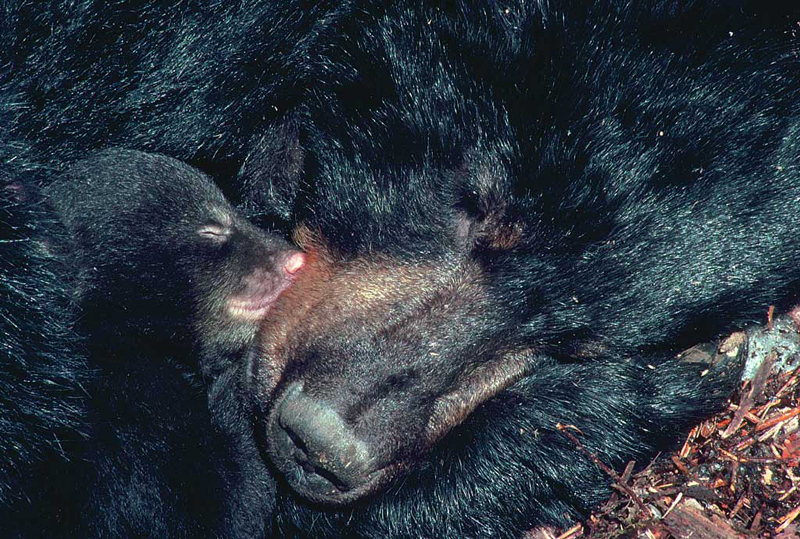
It’s good for those who have wings - they flew away and that’s it. Well brown bear through thickets and wild forest it is impossible to get to places where the climate is warmer.
And he finds a rather practical solution. In the summer, the bear eats its food and then goes into hibernation until spring. But not everything is as simple as it might seem at first glance. Imagine what you would be like if you didn’t drink or eat for six months. Let's get acquainted with some amazing processes that occur in the body of a bear during hibernation.
Busy summer
To prepare for the six-month “fast,” the she-bear needs to make energy reserves.” So she doesn't worry about her figure. Its main goal is to accumulate more subcutaneous fat (in some places its thickness reaches eight centimeters). Although she likes sweet berries best, she is not picky about food. She eats everything: roots, small mammals, fish and ants. By autumn, she can gain weight up to 130-160 kilograms, a third of which is fat. (The male can weigh up to 300 kilograms.) Before plunging into the world of dreams, she stops eating and emptys her intestines. For the next six months she does not eat anything, does not urinate or defecate.
Bears choose a place for a den in a cave, an abandoned anthill or a depression under the roots of trees. The main thing is that it is quiet there and no one disturbs your sweet sleep. Bears collect spruce branches, moss, peat and other materials to make a warm and cozy bed. The den is not much larger than the massive body of the bear. When winter comes, snow will cover the den and only an attentive observer will be able to see the hole through which air enters there.
Hibernation
Some small mammals, such as hedgehogs, bats and dormice, experience true hibernation, that is, they spend most of the winter in a state similar to death. Their body temperature approaches the ambient temperature. But a bear's body temperature only drops by 5 degrees Celsius, so its sleep is not that deep. “You can’t say that a bear ‘sleeps without its hind legs.’ The bear raises its head and turns from side to side almost every day,” says Raimo Hissa, a professor at the University of Oulu in Finland, who has spent many years studying bear hibernation. Yet the bear rarely comes out. from her den in the middle of winter. During hibernation, the animal’s body works “in economy mode.” The heart rate decreases to 10 per minute, and the metabolic process slows down, when the bear sleeps, fatty tissues begin to be broken down by enzymes. and supply the animal's body with the necessary calories and water. Despite the fact that the processes that support life in the body slow down, a certain amount of waste is produced as a result of metabolism. How can a bear get rid of it and at the same time keep her den clean? Instead of removing waste? , the body processes them!
Professor Hissa explains: “Urea from the kidneys and bladder is reabsorbed into the blood and transported by the circulatory system to the intestines, where it is hydrolyzed by bacteria into ammonia.” Even more surprising is that this ammonia goes back to the liver, where it participates in the formation of new amino acids that form the basis of proteins. By converting waste into building materials, the bear's body feeds itself during a long period of hibernation!
In the old days, people hunted bears sleeping in dens. Sleepy Toptygin became easy prey. First, hunters on skis found a den, then surrounded it. After this, the bear was woken up and killed. Today, winter bear hunting is considered a cruel activity, and it is banned almost throughout Europe.
Studying bear hibernation
At the Department of Zoology of the University of Oulu, research has been carried out for several years on the physiological processes by which animals adapt to cold. Brown bears began to be studied in 1988, and a total of 20 individuals were observed over these years. A special den was created for them in the zoological garden of the university. To measure body temperature, study metabolism, vital activity, as well as changes that occur during hibernation in the blood and hormones, scientists used computers, video cameras, and did laboratory tests. Biologists collaborated with specialists from other universities, even Japanese ones. They hope that the research results will be useful for solving problems related to human psychology.
New life
The bear sleeps all winter, turning from side to side, but an important event occurs in the life of the bear. Bears mate in early summer, but the fertilized cells inside the expectant mother's body do not develop until the mother bear hibernates. The embryos then attach to the wall of the uterus and begin to grow. After just two months (in December or January), the body temperature is expectant mother rises a little, and she gives birth to two or three cubs. After this, her body temperature drops again, although it does not become as low as before childbirth. Papa Bear does not see his children being born. But the sight of newborns would probably disappoint him. It would be difficult for a huge dad to recognize these tiny creatures weighing less than 350 grams as his offspring.
The she-bear feeds the cubs with nutritious milk, this depletes her already weakened vitality. The cubs grow quickly, by spring they become fluffy and already weigh about five kilograms. This means that the bear’s small “apartment” is full of excitement.
Spring
March. The cold winter has passed, the snow is melting, the birds are returning from the south. At the end of the month, male bears emerge from their dens. But the mother bears remain in their shelter for several more weeks, perhaps because the babies take a lot of their energy.
After a long hibernation, all that remains of a well-fed bear is skin and bones. The snow melted, and with it her fat melted. With all this, the bear is surprisingly mobile - no bedsores, seizures or osteoporosis. Some time after leaving the den, she cleanses the intestines. Typically, bears begin to eat only two or three weeks after waking up, since the body does not immediately get used to the new conditions. But then they develop a remarkable appetite. But since nature itself has recently awakened from winter sleep, then at first there is not much food in the forest. Bears chew larvae and beetles, eat old carcasses, and sometimes even hunt reindeer.
The care of raising cubs falls on the shoulders of the mother bear, and she protects her cubs like the apple of her eye. An ancient proverb says: “It is better for a man to meet a mother bear without children than a fool with his foolishness” (Proverbs 17:12). In other words, it is better not to date either one or the other. “Mama bear has a lot on her plate. If a male bear approaches, she immediately forces the cubs to climb a tree. The point is that the male can harm them, even if he is their father,” explains Hissa.
The cubs spend another winter in the den with their mother. Well, next year they have to look for their own den, since the bear will have new tiny cubs.
We already know a lot about the complex and unusual phenomenon of bear hibernation, but much still remains a mystery. For example, why does a bear become sleepy in the fall and why does it lose its appetite? Why doesn't he have osteoporosis? Uncovering a bear's secrets is not easy, and that's understandable. Everyone has their own secrets!
Greetings, dear friends, on the pages of the ShkolaLa blog! My name is Evgenia Klimkovich and I invite you for another portion of useful and interesting information that will certainly be useful to you for preparing projects on the world around you.
Today we’ll talk about which animals hibernate in winter.
Let's try to make our own list, TOP 5 sleepy animals.
We learn that winter sleep can be different.
And let's figure out why animals generally go to bed for so long? That's where we'll probably start.
Lesson plan:
Why sleep for so long?
There are two main reasons for this:
- It's getting cold.
- Getting hungry.
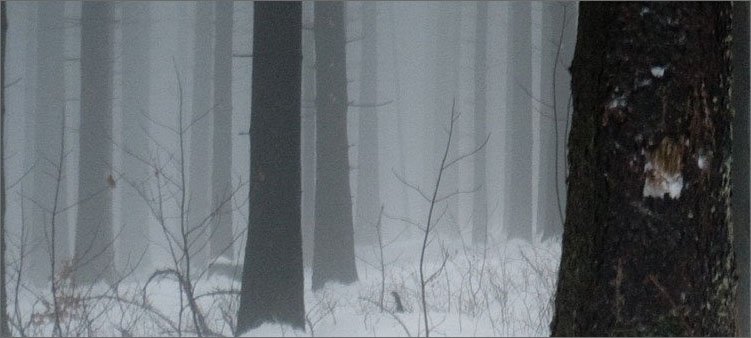
Animals that like to sleep live mainly in those places on earth where winter time It gets quite cold during the year. Where snow falls and because of this the food that animals eat disappears. They also exist in Russia.
And here the question arises. Why then don’t all animals fall asleep? For example, hares gallop through the forest all winter in white fur coats. Or foxes, they don’t go to sleep either.
Let's think about it.
What do hares eat? In summer they eat herbs, berries, seeds, and do not refuse mushrooms and young shoots of bushes.
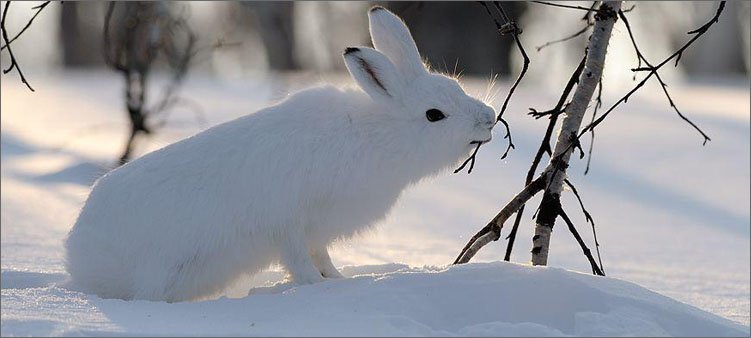
And in winter, when all of the above cannot be found under the snow, bunnies eat fallen tree branches, stems sticking out from under the snow, gnaw the bark from the trunks and chew dry grass that they manage to dig up.
Well, foxes, they hunt both in summer and winter. The same hares, birds, mice, sometimes raid chicken coops.
In addition, these animals change their coats to warmer ones closer to winter. And therefore, although it is difficult for them to survive in winter, it is possible.
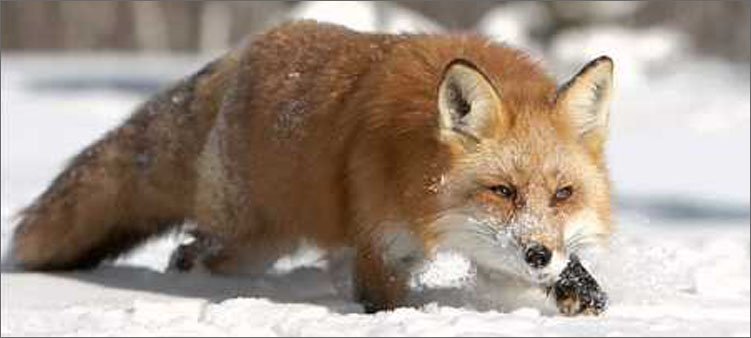
But the poor frog doesn’t even have a fur coat in the summer, so she can’t survive the cold. So I have to go to bed.
Some animals are able to travel long distances in search of food. This is, for example, what reindeer do when their habitat runs out of moss lichen, the main food for reindeer.
What about hedgehogs, for example? By the time they run somewhere on their short legs, winter will be over.
Migratory birds escape cold and hunger by flying to warmer regions.
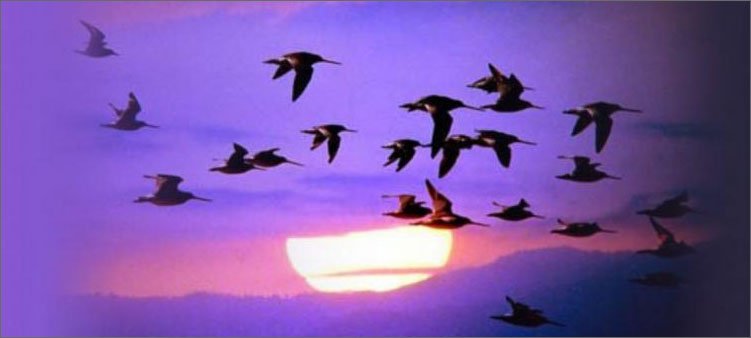
And if gophers could fly, then they too would fly after the birds. But, as you know, they cannot fly. And so they also have to hibernate.
Did you know that animals sleep differently?
Types of winter sleep
Animals are all different and therefore they sleep differently in winter too. There are three types of winter sleep:
- Hibernation.
- Numbness.
- Anabiosis.
Hibernation
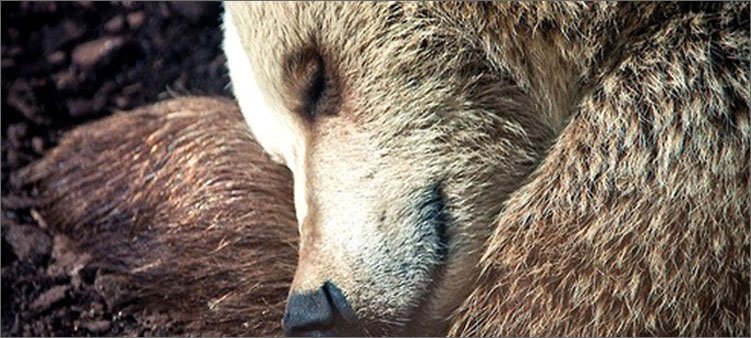
Hibernation is scientifically called “hibernation.”
Deep sleep, during which all processes in the animal’s body change:
- heartbeat and breathing slow down;
- body temperature decreases;
- Nervous activity is inhibited.
Numbness
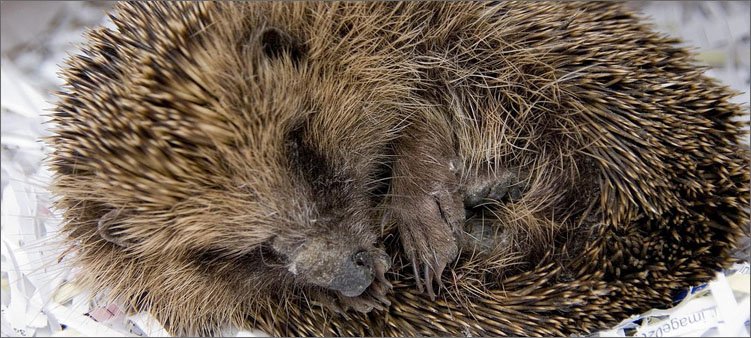
An animal that has fallen into a stupor is completely motionless, and all its vital signs sharply decrease. And often the animal’s body temperature is only slightly different from the ambient temperature.
Anabiosis
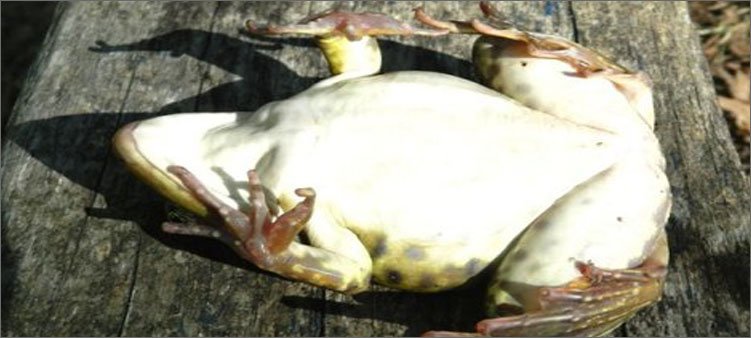
"Annabiosis" comes from Greek word, meaning "return to life"
Compared to torpor and hibernation, anabiosis is a deeper slowdown of all life processes. An animal in a state of suspended animation can easily be mistaken for dead, since its heartbeat and breathing are so slow that they can only be detected using special equipment.
And now I present the top 5 well-known animals that fall into hibernation. Let's start with the well-known brown bear.
Brown bear
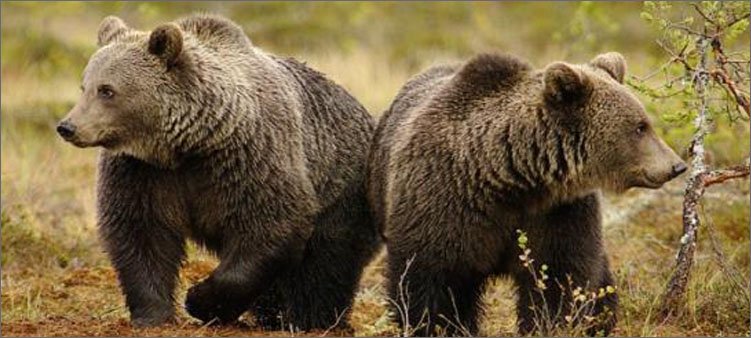
WITH junior group kindergarten We all know that a bear sleeps in a den in winter and sucks its paw. Is this really true? Well, about the paw, of course, this is fiction. But about sleep – it’s true.
Moreover, the bear begins to prepare for its long sleep in the summer. He switches to an enhanced diet in order to accumulate more subcutaneous fat, the layer of which can reach 10 cm by autumn. There should be enough nutrients, because during hibernation bears do not eat or drink.
Bears eat sweet forest berries, roots, and honey from wild bees. They love to eat fish or ants, as well as small animals.
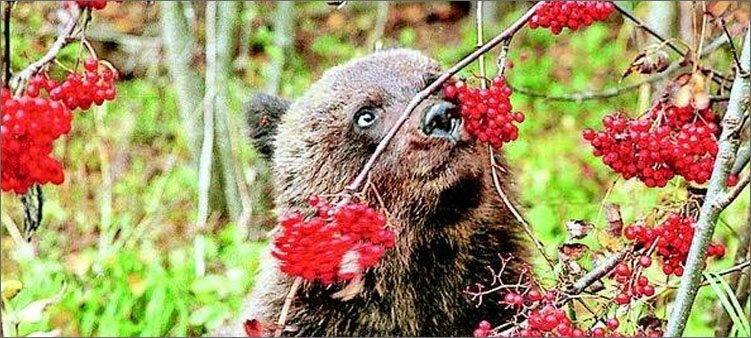
But accumulating fat is not the only concern of bears before bed. You still need to find a place to hibernate and set up a den. For dens, bears choose places that are dry, warm and protected from possible invasion by enemies.
A bear can make a den:
- between tree roots;
- in a hollow;
- in an old anthill;
- in the dugout he dug.
And sometimes a bear builds a high den from tree branches, it resembles a large nest. In order to sleep comfortably and warmly, the bear lines the bottom of the den with moss and spruce branches.
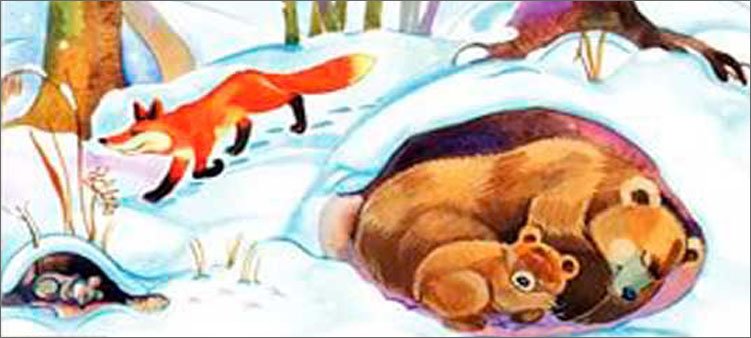
When does a bear go to bed? Between November and December. The further north and colder the bear’s habitat, the earlier it climbs into its den.
This is interesting! Pregnant bears and mothers with cubs go to bed first.
Well, bears wake up between the end of February and April.
Bears' sleep is not that deep. In the den he turns over from side to side, you can wake him up. The she-bear wakes up on her own in winter in order to give birth to cubs and feed them in a cozy and safe den with her milk.
During hibernation, a bear's body temperature decreases slightly, by only 5 degrees. And the heart beats at a speed of 10 beats per minute.
It also happens that a bear does not have time to prepare for winter. Does not gain the required fat reserves or does not set up a den. Then he doesn’t hibernate, he just walks through the forest all winter, hungry, angry and very dangerous. This kind of bear is called a connecting rod. And it’s better not to meet with him.
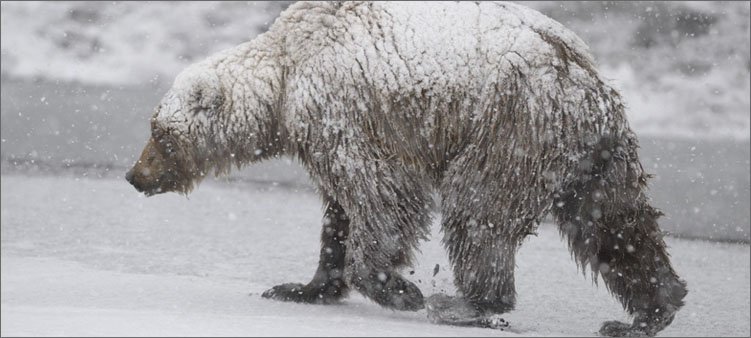
Do you want to know which animal other than the bear falls into winter sleep? Then read on)
Hedgehog
![]()
Do hedgehogs really hibernate? Absolutely right, they are falling! And not just hibernation, but real numbness. At the same time, their body temperature drops from the usual 34 degrees to 1, and the number of heartbeats is reduced to a minimum.
In order to understand why a hedgehog sleeps in winter, you need to get acquainted with its diet. So, our prickly friend’s favorite dishes are:
- worms;
- slugs;
- snails;
- frogs;
- beetles;
These are mainly insects that the hedgehog cannot store for future use, such as squirrel nuts.
Hedgehogs can also eat snakes, even poisonous ones. The poison has no effect on them. Scientists still cannot understand why this happens.
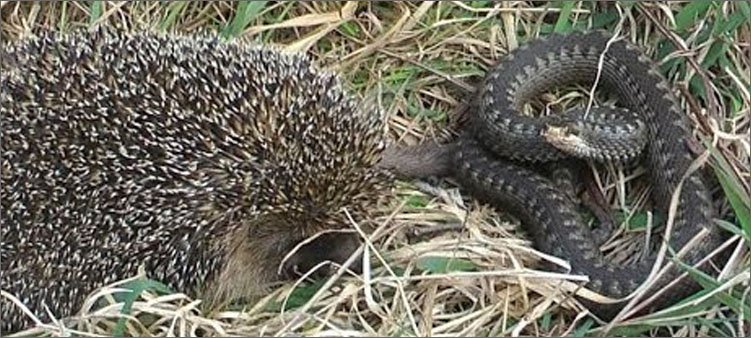
And due to the fact that there is no food for hedgehogs in winter, they go to bed. But first they carefully prepare for this. The hedgehog, like the bear, tries to eat more in order to accumulate fat, and looks for a hole in some secluded place.
The hole must be about 1.5 meters deep. Otherwise it will be very cold there and the hedgehog will simply freeze. The animal lines the bottom of the hole with dry grass and compacts it thoroughly. Then it blocks the entrance to the hole, curls up into a ball and falls into a stupor. The colder it gets outside, the deeper the hedgehog's torpor.
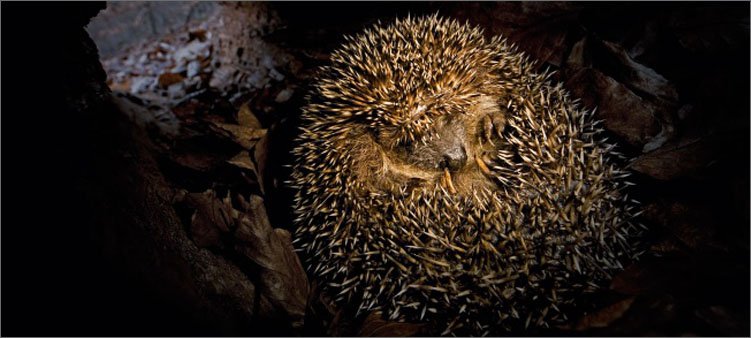
In this state, a hedgehog can stay up to 240 days without food or water. Well, when it gets warmer outside in the spring, the hedgehog comes out of his stupor and gets out of his hole.
Bat
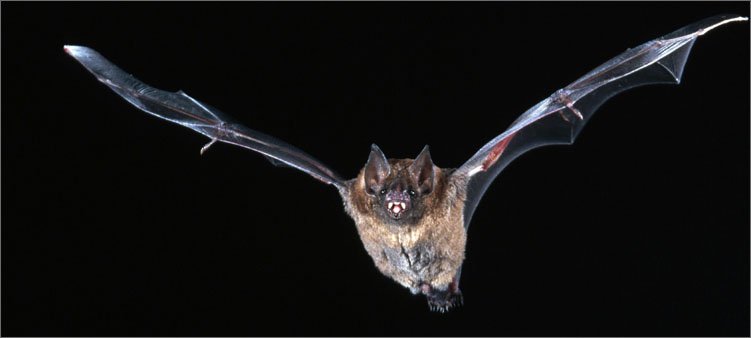
Another big lover of insects, which is forced to hibernate in winter due to lack of food and low temperatures.
Some species of bats, like migratory birds, fly away to warmer climes, but most species remain to winter where they hunt in the summer.
For their winter sleep, bats choose places where the air temperature, even in winter, does not drop below 7 degrees. Where the humidity is quite high and there are no drafts. These can be caves, mines, dungeons, tree hollows, attics and basements of houses.
The bat sleeps, tightly clinging its paws to the ceiling or wall.
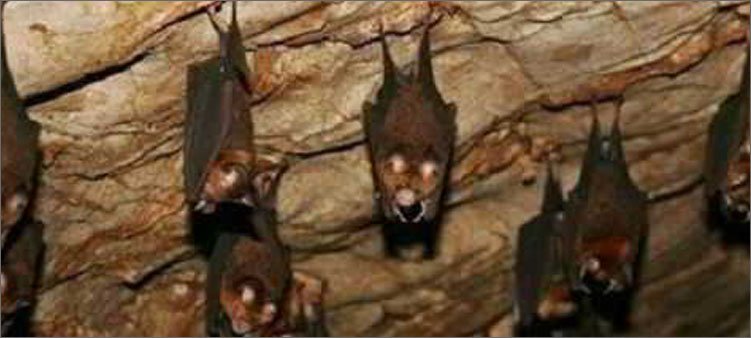
Body temperature during this period decreases significantly, as does the number of heartbeats per minute. Moreover, if it becomes too cold in the wintering place, or if someone disturbs the animals, they emerge from suspended animation and move to a more suitable place, where they fall asleep again.
Mice can remain in this sleepy state for up to 6-8 months.
This is interesting! It is not easy for bats to find a place to hibernate. That's why they remember good places where they have already spent the winter and return there again.
Frog
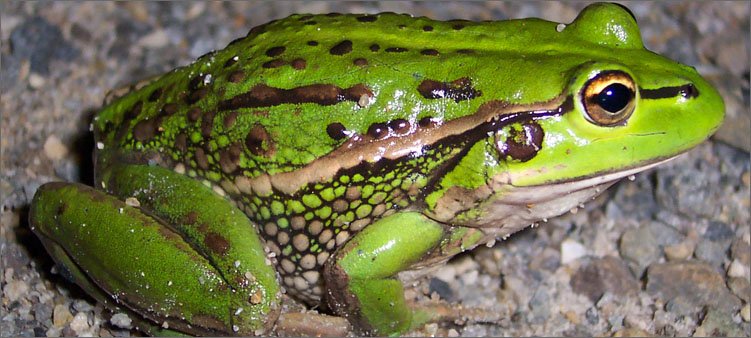
How do well-known frogs survive the harsh winter? It is impossible to give one answer here. There are about 500 species of frogs. And they winter differently.
The bullfrog, for example, sinks to the bottom of the lake and buries itself in the mud. It sits like that all winter. Her body temperature drops greatly. She doesn't eat, drink or even breathe oxygen.
The question arises, how does a frog breathe? And why doesn't she die without air? The fact is that in this state the frog does not need to spend energy, and therefore it practically does not need oxygen. And the small amount of oxygen that is needed penetrates the skin.
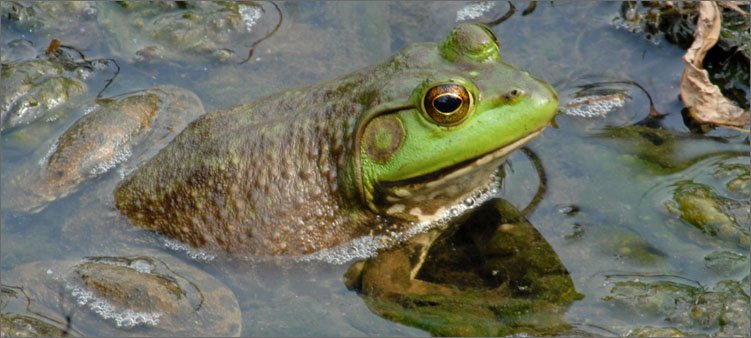
The bullfrog emerges from suspended animation when the ice on the surface of the lake melts. She just couldn't get out before. Well, since lakes rarely freeze to the very bottom, the frog stays all winter in a kind of thermos, which does not allow it to freeze completely.
But not all frogs spend the winter in water. There are also those who make their “bed” on the shore. Under snags, under stones. When winter comes, these frogs go into deep suspended animation. It even happens that their body temperature drops below zero degrees.
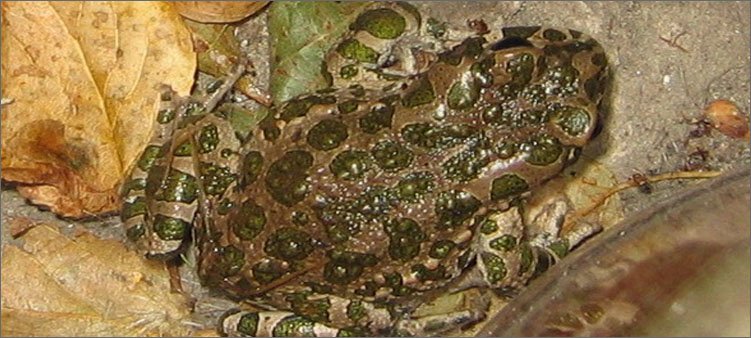
This animal looks just like a dead one. But if you warm the frog, it will come to life.
Gopher
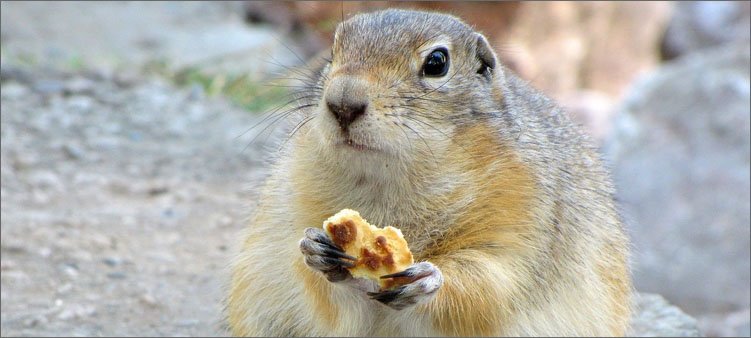
The one who loves to sleep is the gopher. A relative of the squirrel. In winter, he falls into torpor and can remain in this state for more than 6 months. But the most interesting thing is that if in the summer the gopher does not have enough food, then it can go into summer hibernation.
Summer hibernation is scientifically called “estivation.”
Gophers feed on roots and leaves of plants, grasses, grains, and seeds.
Gophers are excellent diggers. They dig holes up to 3 meters deep. Well, the length of such a mink can reach 15 meters. A nest is made in the mink, which is lined with grass and leaves. In this nest, gophers give birth and sleep in winter.
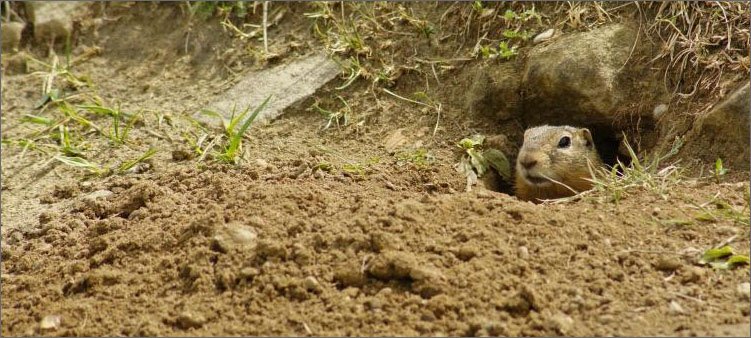
The animals sleep sitting on their hind legs, they lower their head to their abdomen and cover themselves with their tail. And they sleep very deeply. Neither a loud sound nor slight warming can wake them up.
A sleeping gopher is completely cold to the touch, its feet turn white. If in a state of wakefulness the gopher inhales 150 times per minute, then in a stupor it is only 1 time in 8 minutes. And the body temperature drops very much, sometimes down to – 3 degrees.
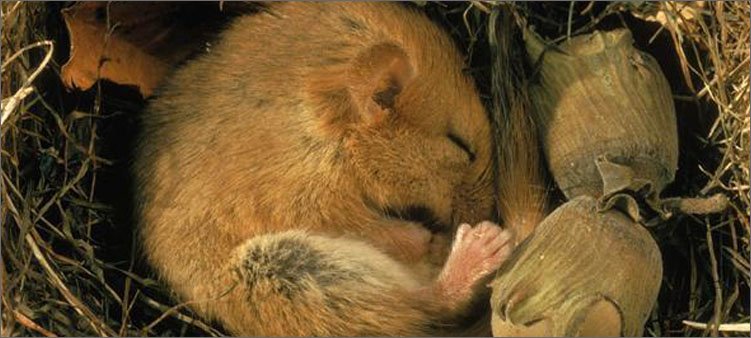
During hibernation, gophers lose up to half their weight. Therefore, animals must eat well before a long sleep in order to accumulate more fat and muscle mass. Otherwise, you may not survive the winter.
What can you add to the project to make it even more beautiful? For example, poems about wintering animals. You can hear some of them in one of the episodes of the “Visiting Dunyasha” program, which I found for you.
There is much more interesting for you on the blog. For example, in you can get to know the owner of the mountains better - the snow leopard, and you will find a lot of fascinating information about the cockchafer.
That's all for today!
I wish you a fun learning experience!
Evgenia Klimkovich.
Hibernation is a very interesting and complex process that deserves our attention and observation. Animals that mostly live in a temperate climate (warm summers and cold winters) go into hibernation. For many animals, hibernation is the only way to survive during the frosty winter, since at this time it is very difficult for them to get food for themselves.
During hibernation (or hibernation), the animal's vital processes and metabolism, as well as its pulse and breathing rate, slow down. The animal begins to prepare for hibernation several months before the onset of cold weather. Before hibernation, it accumulates fat in order to survive this difficult period.
There is also torpor and suspended animation, characterized by more sound sleep and an even greater slowdown of internal processes.
In first place in this ranking is, of course, the well-known bear. However, it turns out that only three species of bears hibernate (brown, black and Himalayan). The rest of the bears (including polar bears) do not hibernate.
A bear's sleep is not as sound as that of other hibernating animals. The bear sleeps lightly and superficially. The body temperature practically does not decrease, and all internal processes work in the usual rhythm. However, waking up a hibernating bear is highly discouraged. An awakened bear is very aggressive, angry and dangerous. Often a bear simply wanders through the forest, using up its accumulated energy before winter and losing its fat reserves. Such bears are called “connecting rods”.
During hibernation, a bear can lose up to half its body weight.
photo 4
Hedgehogs do not store supplies for the winter, as they feed mainly on insects. Therefore, they have to store fat in the summer season and sleep in the winter. By winter (in October), hedgehogs become fat and hibernate, finding refuge in dense bushes, depressions in the soil, covered with fallen leaves, among forest brushwood. The hedgehog wakes up only when the frost stops.
3. Gopher.
Gophers are animals that can hibernate for a very long time, up to 9 months a year. After awakening, they most often experience a short period of vigorous activity.
Not all bats hibernate. This directly depends on the climate and habitat. If temperatures in a bat's habitat fall below freezing in winter, they either hibernate in caves or other sheltered areas or migrate to warmer areas. Hibernation resembles deep sleep, in which the heartbeat is barely noticeable and breathing slows down to one inhalation and exhalation every 5 minutes. An active animal's body temperature is 37-40°C, while during hibernation it drops to 5°C.
All marmots, regardless of species, hibernate.
Research has shown that marmots prefer plants rich in polyunsaturated fatty acids, the higher concentration of which in the adipose tissue of sleeping animals helps them tolerate more during hibernation. low temperatures. By the end of summer, marmots accumulate up to 800-1200 g of fat, which amounts to 20-25% of their weight. During hibernation, the life processes of marmots almost freeze: body temperature drops from 36-38 to 4.6-7.6 °C, breathing slows down to 2-3 breaths per minute instead of the normal 20-24, and heartbeat - to 3-15 beats per minute instead of 88-140. In winter, marmots do not eat and hardly move, subsisting on stored fat reserves. However, since energy expenditure during hibernation is low, in the spring marmots often wake up quite well-fed, with a reserve of 100-200 g of fat.
During the winter, badgers go to sleep. Just like in bears, it is almost not accompanied by a decrease in body temperature and a slowdown in basic vital functions. By autumn, the badger accumulates significant reserves of subcutaneous fat, so that its weight almost doubles. By the time it lies down, its hole has already been cleaned, the nesting chamber is filled with fresh bedding, and the badger, climbing into the hole for the last time, clogs the entrance holes with earth and leaves. If several animals live in one common “badger” for the winter, then each one sleeps in a separate nesting chamber. Animals stop appearing on the surface after the first snow falls. In the spring, they awaken with the beginning of active snow melting, when the average daily temperature passes zero.
.With the onset of autumn night frosts, the jerboas hibernate in deep burrows with several wintering chambers; they do not store for the winter.
9. Cold-blooded.
Cold-blooded vertebrates: amphibians (frogs, newts), reptiles (lizards, snakes), and fish, when cold weather sets in, fall into suspended animation (or torpor), in which all internal processes slow down so much that sometimes the animal can be mistaken for dead. Winter torpor occurs when the ambient temperature drops. Animals hide in secluded places (in burrows, under snags) and fall into torpor until the onset of spring.
Another type of torpor is “summer torpor.” Animals - residents of hot countries - fall into it when vegetation burns out. For example, during summer torpor, steppe turtles “dry out,” that is, they lose a lot of water. The following types of turtles hibernate in winter: Mediterranean, Central Asian, Herman's tortoise and scalloped tortoise.
A large number of insects also hibernate or hibernate. In insects this process is called “diapause”. Before the onset of cold weather, they find secluded places, hide in the ground, under the bark of trees, hide in corners and cracks and fall into deep sleep. For example, spiders, beetles and butterflies hide for the winter under the bark of trees or stumps, bees spend the winter in hollows.
Be that as it may, with the beginning of spring and the arrival of warmth, all these animals come to life, awaken from a sound sleep, leave their warm winter shelters in order to begin a new cycle of their lives.
It's no secret that bears sleep in winter. This is perhaps one of the most famous and interesting features bears. But why do bears sleep in winter, and how exactly does this happen?
Reasons for bear hibernation
Not all bears hibernate, but only those that live in regions with long, cold winters and a lot of snowfall.
The main reason for bears' winter sleep is related to their diet. The fact is that bears are extremely large animals, the weight of some representatives reaches 700 kg.
Such a huge animal requires a lot of food. Despite the fact that the bear is practically omnivorous, with the onset of cold weather it has great difficulty in obtaining food. It is almost impossible to find plant food under a layer of snow, and hunting in winter is much more difficult.
In addition, in cold weather, energy costs increase significantly, because the animal also needs energy for heating.
That is why, with the onset of cold weather, bears choose a safe place and go to bed. Hibernation can last from 4 to 6 months. All this time, the bear subsists on subcutaneous fat reserves accumulated over the summer.
During hibernation, the animal's body works differently. Energy requirements are reduced to a minimum, the breathing rate changes, which allows you to save air in the den. In this state, a bear can sleep for many months without endangering its life. In the dens of female bears, cubs appear, which spend the winter with her, feeding on her milk.
Bears are very light sleepers, so even the slightest noise can wake them up. A sleep-deprived, hungry bear is a serious threat to forest peace. Crank bears are very aggressive and ferocious.
Not all types of bears sleep in winter. For example, among Arctic polar bears, only pregnant bears and females with cubs hibernate - their energy costs are very high. The males remain awake, eating nutritious seal fat and meat.
You may also find these articles useful.

